
How Does ChatGPT Work
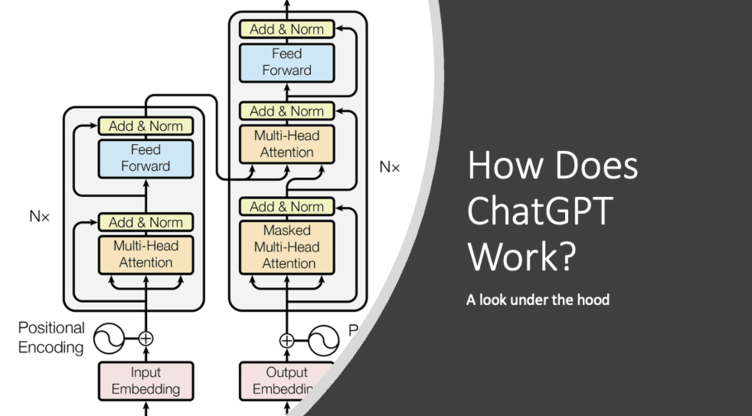
How Does ChatGPT Work : ChatGPT is the most recent advancement in commercial AI technology. Continue reading to learn more about ChatGPT and how it works.
ChatGPT has recently dominated the news cycle. The artificial intelligence language processor went public in December 2022 and grew faster than juggernauts like Instagram and TikTok.
ChatGPT has 57 million active monthly users and is anticipated to hit 100 million in January, a record that took TikTok nine months and Instagram two and a half years to accomplish.
With so much excitement about the programmed
, you may have a few concerns regarding the technology. What exactly is it? How does it function? Is it usable by anyone? Is it threatening everyone’s job? Continue reading for more information on ChatGPT.

What is ChatGPT?
ChatGPT is an artificial intelligence program developed by a company called OpenAI. In 2015, Elon Musk, Sam Altman, Greg Brockman, Ilya Sutskever and Wojciech Zaremba founded OpenAI, an artificial intelligence research organization. OpenAI has other programs, but ChatGPT was introduced in 2018.
ChatGPT is based on GPT-3, the third model of the natural language processing project. The technology is a pre-trained, large-scale language model that uses GPT-3 architecture to sift through an immense pool of internet data and sources to reference as its knowledge base.
This AI is a well of knowledge, but its ability to communicate is what sets it apart from other technology.
It has been fine-tuned for several language generation tasks, including language translation, summarization, text completion, question-answering and even human diction.
ChatGPT is a transformer-based neural network that provides answers and data with human writing patterns.
Other fast facts about ChatGPT include:
- ChatGPT is large-scale. It has over 175 billion parameters, making it one of the largest language models ever.
- ChatGPT is pre-trained. The program has a “set it and forget it” quality, meaning all the legwork to make it function has already happened.
- ChatGPT is capable of multitasking. The program has more than one language function, so it can simultaneously juggle translation, summarization and answering questions.
- ChatGPT responds in real time. Like a chatbot you’d find while online shopping, ChatGPT responds very quickly after you ask it a question or complete a task.
Essential Terminology ChatGPT
When it comes to high-level AI, there are several terms used to explain how the technology works that need explaining themselves.
See below for a list of key terms that will help during the rundown of ChatGPT.
- Artificial intelligence: AI is a sector of computer science that focuses on building systems that can perform tasks as humans do. Typical forms of AI include speech recognition, language translation and visual perception.
- NLP: Natural Language Processing is a subsection of AI dedicated to the interaction between humans and computers using language. Through algorithms and models, NLP can analyze, comprehend and use language with human diction.
- Neural network: A neural network is a machine learning algorithm that functions like a human brain. Just as the brain has pathways where information is stored and functions are carried out, AI uses neural networks to mimic that process to problem-solve, learn patterns and collect data.
- Transformer: A transformer is a structure within the neural network meant for NLP tasks that use mechanisms to analyze input and generate output.
- GPT: A generative pre-trained transformer is a transformer-based language developed by OpenAI, which is who gave it the name. This is the first version of the language processor and generator part of the program that is unique to OpenAI, as it can generate text in a human-like way.
- GPT-3: This stands for Generative Pre-trained Transformer 3, based on the Transformer network architecture developed by OpenAI. It is the most dynamic version of GPT to date, as it has self-attention layers that allow the program to multitask, adjust in real time and generate a more authentic output.
- Pre-training: This is just what it sounds like — it’s the work OpenAI had to do to train the neural network to work how it wanted it to before it was ready for public consumption.
- Fine-tuning: This part of training comes after pre-training. The program takes one task and trains it even further on a smaller, more specific task on more particular data. This is why ChatGPT can work so thoroughly.
- API: An application programming interface is how the program remains uniform.
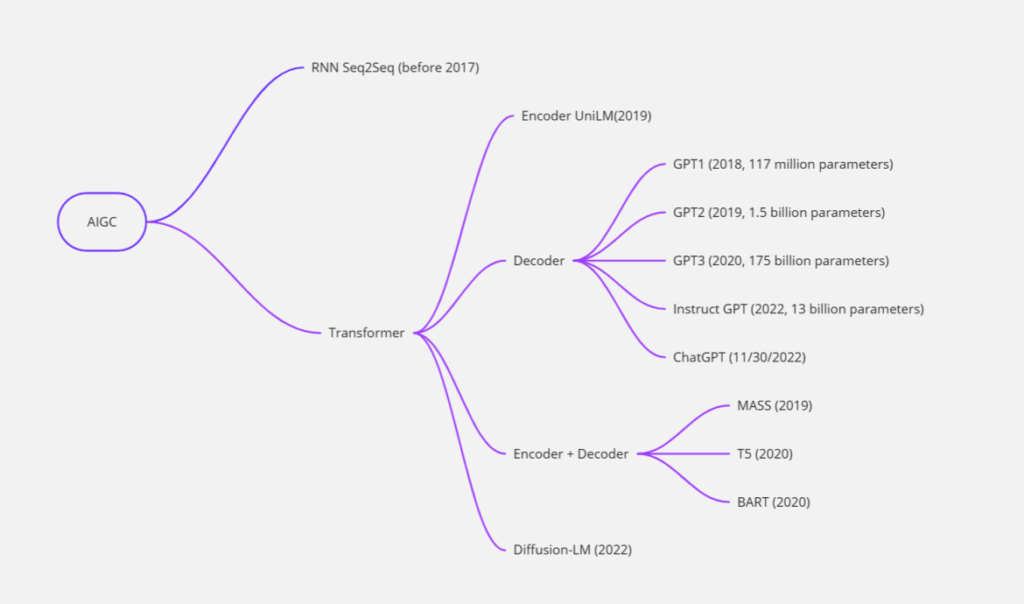
How does ChatGPT work?
ChatGPT uses a vast neural network to produce the human-like language through which it communicates. But how does that process happen?
Take a look below for a step-by-step breakdown of the process:
- Input processing: The human user types commands or questions into ChatGPT’s text bar.
- Tokenization: The text inputted is tokenized, meaning the program divides it into individual words to be analyzed.
- Input embedding: The tokenized text is put into the neural network’s transformer portion.
- Encoder-decoder attention: The transformer encodes the text input and generates a probability distribution for all possible outputs. Then that distribution generates the output.
- Text generation and output: ChatGPT generates its output answer, and the human user receives a text response.
What are ChatGPT’s capabilities?
ChatGPT has extensive capabilities that will likely change the landscape of many industries.
The artificial intelligence program can complete tasks like:
- Text generation.
- Text completion.
- Question-answering.
- Summarization.
- Text translation.
- Conversational AI.
- Sentiment analysis.
- Named entity recognition.
- Part-of-speech tagging.
Keep reading to find out more about each capability.
Related: The Complete Guide to Effectively Using AI Writing Tools in Content Marketing
Text generation
ChatGPT is nothing without its text generation, as that is how it communicates with its human users. The program uses its pre-trained database to intake inputs and prompts and generates the appropriate response in a natural, human-like text structure.
Text completion
If you’ve ever wished to have a friend or a sibling that could finish your sentences, ChatGPT might just be the way to go.
ChatGPT can finish your inputted sentence based on content and meaning if you supply the beginning. It might not always be the ending you wanted, but the capability is there.
For example, if you typed a command asking to finish the sentence, “The rainbow is….” You might be thinking, “The rainbow is beautiful.” But ChatGPT might respond, “Red, orange, yellow, green, blue, indigo, violet.
This is because it pulls from its pre-trained knowledge to find the answer. It might not be able to read your mind, but it can read its data.
Question-answering
ChatGPT can answer every question that is part of its pre-trained knowledge. This will include world knowledge and general facts.
The program can also answer questions in the format that you like. So based on your preference, you can command ChatGPT to answer in bullet points, a list or short answers.
Related: Professionals In This Industry Already Can’t Imagine Life Without ChatGPT: ‘I Can’t Remember the Last Time Something Has Wowed Me This Much.’
Summarization
If you input a long text into ChatGPT and command it to summarize the information, it will do so. You should not expect ChatGPT to summarize full-length novels, but a few pages of text is possible as it can handle up to 4095 tokens.
Text translation
Just like Google Translate, ChatGPT can translate from one language to another, including:
- English.
- Spanish.
- French.
- German.
- Italian.
- Portuguese.
- Dutch.
- Russian.
- Chinese.
- Japanese.
- Korean.
- Arabic.
The program uses its neural networks to form syntax and structures like when outputting English. And much like Google Translate, it is not a perfect science. While the AI is incredibly advanced, it may miss some grammar, semantics and other details of foreign languages.

Conversational AI
One of ChatGPT’s biggest highlights is that it can respond in human-like, conversational language.
This is a helpful way to receive and digest the output. It can also be useful for companies with ecommerce sites that want to integrate conversational interfaces for chatbots, virtual assistants and other applications.
Related: Conversational AI Is a Revolution That’s Just Getting Started. Here’s How It Can Boost Your Business.
Sentiment analysis
ChatGPT can actually determine sentiment or human feeling when analyzing text. For example, when a customer leaves a review on an ecommerce site, ChatGPT can analyze the text and determine if it is positive, negative or neutral.
This can be extremely useful for companies completing market research to gather data on their products and services.
Related: Top Four Data Analytics And AI Trends That Will Drive Businesses In 2023
Named entity recognition
ChatGPT can identify the names of people, organizations and locations. Keep in mind that ChatGPT’s neural network lexicon only spans until 2021, so anything that exists after that will not be accessible.
Parts-of-speech tagging
The grammar engine of your dreams has arrived. ChatGPT is all about language, which means it’s an expert on parts of speech. If you need a refresher on nouns, verbs, adjectives and sentence structures, ChatGPT is a great resource.
How can different industries use ChatGPT?
Many people are raising concerns that ChatGPT and other artificial intelligence programs will take human jobs. While that might be true to an extent, AI can also make workstreams more efficient and create a smoother process when used correctly. See below which industries can benefit from ChatGPT and how you can implement it.
Customer service
ChatGPT is a way to provide 24/7 ecommerce site support for consumers. Train ChatGPT as a chatbot to answer FAQs and support requests.
ChatGPT will help with time and resources, as artificial intelligence can assist more customers and provide cheaper labor for companies. In turn, it gives time back to human employees to focus on customers with more complex needs.
Related: 3 Brands Crushing Instant Customer Service
Education
ChatGPT has been a hot topic when it comes to education. While you can use it for good, like educational chatbots, personalized assistance and feedback, it can also provide an easier way for students to plagiarize essays and other school work.
Related: OpenAI Rolls Out New Feature to Help Teachers Crack Down on ChatGPT Cheating — But Admit the Tool Is ‘Imperfect’
Healthcare
Healthcare is an industry that has grown increasingly reliant on chatbots to assist patients with health concerns, information and advice and connect them to the best healthcare provider.
More than any other industry, humans must double-check the reliability of ChatGPT’s information to ensure safety.
Marketing, media, publishing
ChatGPT can cover a significant amount of ground in marketing.
Marketers can utilize the program for several operations, including:
- Content creation.
- Lead generation.
- Email segmentation, optimization and A/B testing.
- Social media management.
- Market research.
- Search engine optimization (SEO).
- Data organization.
Related: Here’s How Your Business Can Use 3 Popular AI Content Creation Tools
Are there any programs similar to ChatGPT?
There are many AI programs constructed by many different companies that operate in a similar way to ChatGPT. Some of the most notable ones include:
- Chatsonic.
- Chinchilla.
- Bloom.
- Megatron Turing NLG.
- Jasper.
- Replika.
- FaceApp.
- Elsa.
- Socratic.
Related: The New Microsoft AI Tool Can Mimic Anyone’s Voice
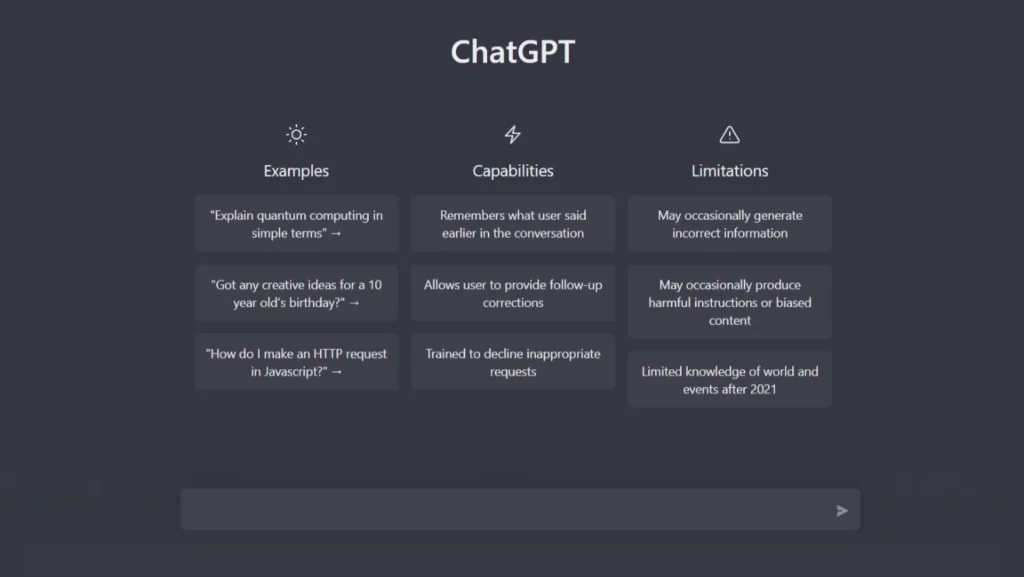
What are some limitations of ChatGPT?
Although ChatGPT is one of the most advanced AI NLPs, it has its limitations.
Bias
ChatGPT might have biases embedded in its training data, like any other machine learning model. This can be biased, including gender bias, racial bias and ageism.
Data privacy
With any technology, there can be privacy concerns that come with it. ChatGPT was built off of massive amounts of data input, which means that anyone who contributed to the data training process is possibly vulnerable, as that data is now forever stored and could also be used.
Misinformation
While ChatGPT is incredibly intelligent, its database does include the Internet — and not everything online is true. Therefore, there is no unwavering guarantee of information accuracy when using ChatGPT.
Language understanding
Again, ChatGPT is highly intelligent but can still struggle to understand certain words, sentences and questions, which can lead to off-topic responses.
Lack of common sense and personability
No matter how smart artificial intelligence is, common sense and personality are human qualities. And while ChatGPT is trained in sentiment, there are still limitations to certain human experiences, goals and understandings.
What should you know about ChatGPT?
ChatGPT is a powerful AI program that proves another step forward in natural language processing. Perhaps its most impressive ability is generating human-like output after analyzing the human input.
From language translation and text summarization to research and automation, ChatGPT has several uses that can be applied to various industries. Keep in mind that, like any technology, ChatGPT has its limitations, so it’s always best to check its work and have a backup plan.
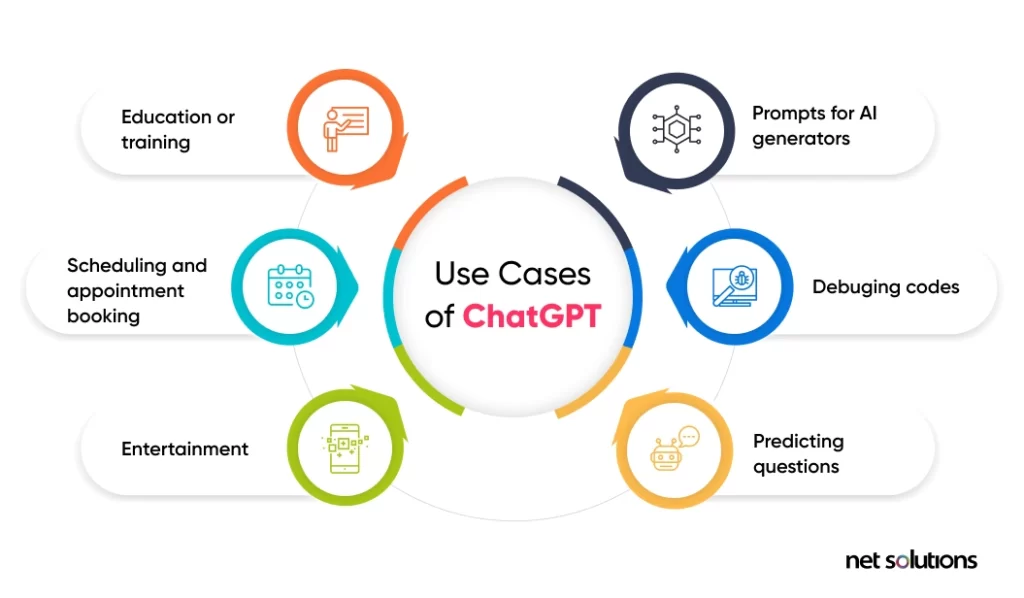











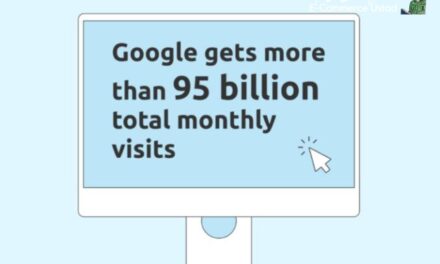

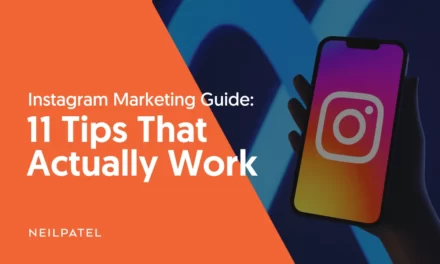
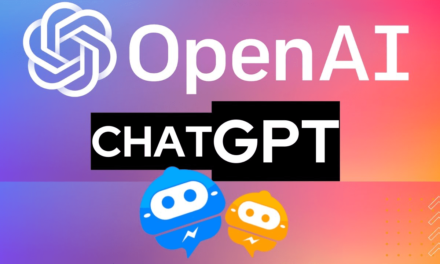

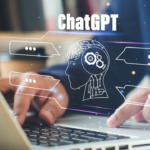






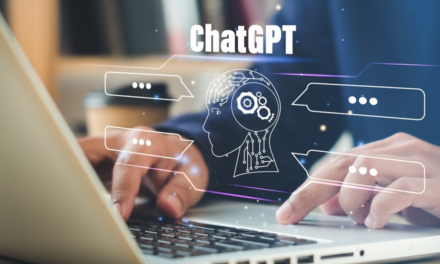

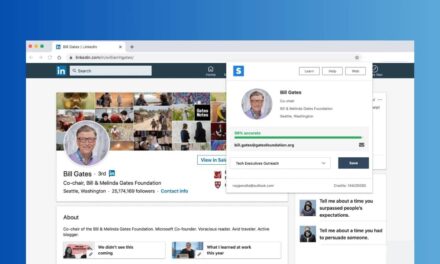



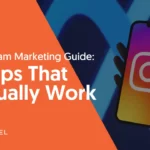

Recent Comments